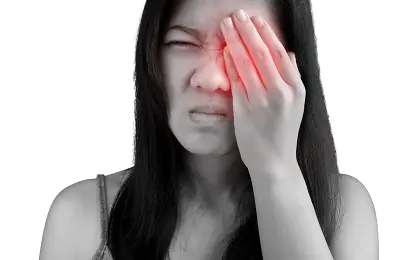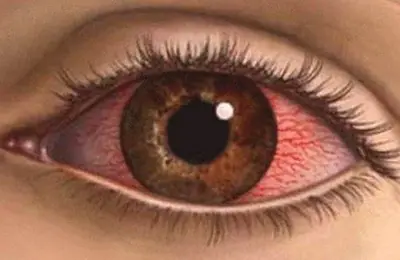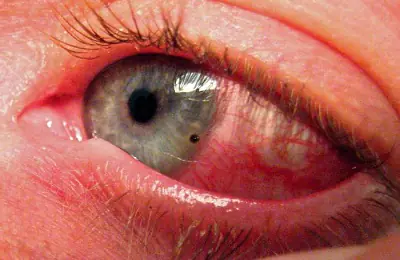Eye burns are not uncommon. They may be different. But the most dangerous type is a chemical burn to the eye. What is it, what causes it, how can I help a person with burns of varying severity? Let's try to answer these questions.
Main characteristics of injury
A chemical burn is an injury to the eye caused by exposure to aggressive chemicals. First of all, there is damage to the conjunctiva - a thin connective membrane that covers the outer surface of the eye and the back surface of the eyelid. It performs an important function because it releases a special liquid that lubricates the eye and prevents it from drying out. Its damage often leads to impairment and even loss of vision.
Chemical burns of the conjunctiva are not uncommon these days. According to statistics, 10% of all eye burns are of chemical origin. Most often, damage occurs when aggressive substances come into contact with the ocular surface. Among them are:

Acids. Most often, burns occur with the following acids:
- hydrochloric acid (HCl);
- sulfuric (H2SO4);
- acetic (HC, COOH);
- hydrofluoric(HF).
An acid burn is similar to a thermal burn. It affects the conjunctiva and cornea without spreading into the eyeball. The degree of damage is affected by the concentration of acids and the duration of their exposure. At the site of acid entry, a necrotic area appears, which is separated from healthy tissue (coagulation). In this case, a very strong pain syndrome appears, since the optic nerves are irritated.
Alkali. The most common alkalis that cause burns are:
- ammonia (ammonium hydroxide);
- caustic soda (sodium hydroxide);
- magnesium hydroxide;
- potassium hydroxide;
- slaked lime (calcium hydroxide).
Burns from alkaline substances are considered more dangerous because the damage extends deep into the eye, from where it is not easy to remove. At the same time, the time of negative impact increases.

This occurs due to the fact that alkali provokes liquefaction necrosis in the proteins, which leads to their melting (myomalacia) and spreading throughout the eye. In this case, the optic nerves are damaged by alkali, which leads to their loss of sensitivity. That is why a person with alkaline burns practically does not feel pain. This often leads to underestimation of damage.
to contents ↑
How do chemical eye burns occur? This occurs through direct contact with acids or alkalis, when, due to carelessness or failure to comply with safety measures, these aggressive substances first enter the area of the conjunctiva of the eye, causing its necrosis (death). Among the risk factors contributing to the occurrence of such burns are:
- Construction or repair manipulations. These types of work often use chemicals that can cause burns.
- Using aggressive substances in everyday life without following safety rules. For example, incorrect or careless use of ammonia, household chemicals containing dangerous acids or alkalis. It is also risky to leave such substances within the reach of children.

Work involving frequent use of chemicals. This may be the production of concentrated acids and alkalis or other types of work where such substances are used.- Careless behavior with car batteries that contain sulfuric acid concentrate. This is especially true for car enthusiasts who do not have professional skills in working with cars.
- Alcohol abuse. In this state, very often people do not follow safety rules, which leads to unpleasant consequences.
Any type of burn is potentially dangerous. Therefore, first of all, a person needs emergency care for a chemical burn to the eyes.
The sooner it is provided, the more favorable the forecasts will be.
How does it manifest?
The severity of a chemical burn depends on many factors. Among them are:

type of chemical (acid, alkali, etc.);- the amount of substance that has reached the surface of the eyes;
- concentration of the chemical (the more diluted it is, the less harm the burn will cause);
- temperature of the substance (the higher it is, the more complex the consequences);
- duration of exposure to the eyes.
The favorable outcome of treatment is also influenced by the patient’s age (the younger the person, the faster the recovery), as well as how timely and high-quality first aid was provided.
There are several degrees of eye damage from chemicals, which differ in the severity of the damage and are manifested by specific symptoms. There are 4 degrees of chemical burns:
The first is considered the mildest degree of burn. Its main features:
- sudden onset of pain;
- cloudiness in the eyes (vision problems);
- the appearance of red blood vessels in the whites of the eyes (hyperemia);
- conjunctival edema (chemosis);
- cloudiness of the fluid in the anterior chamber of the eye.



